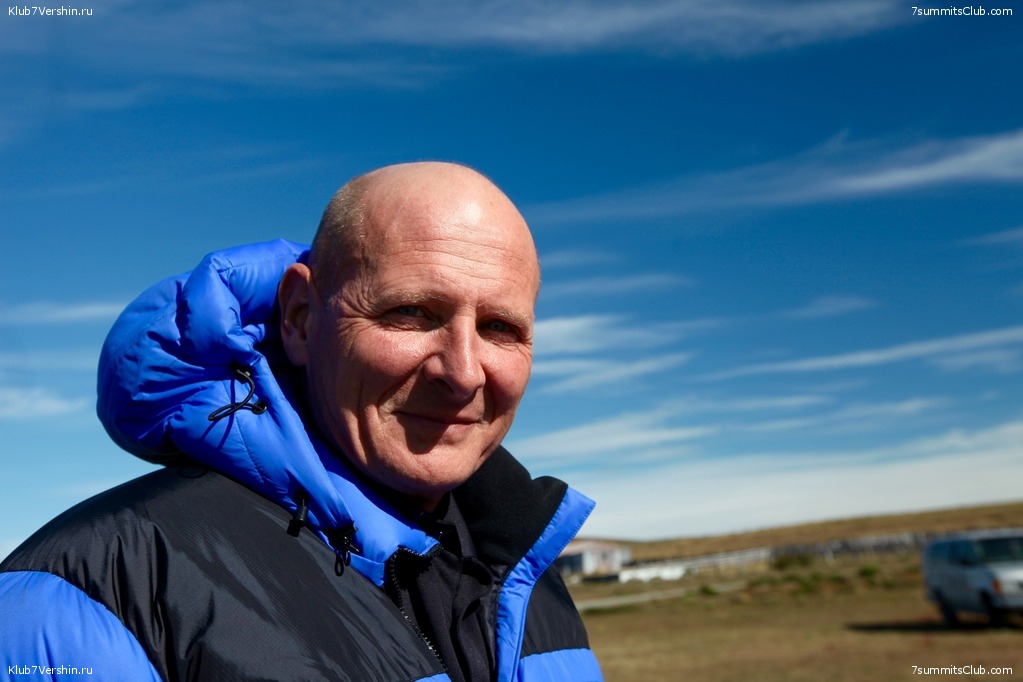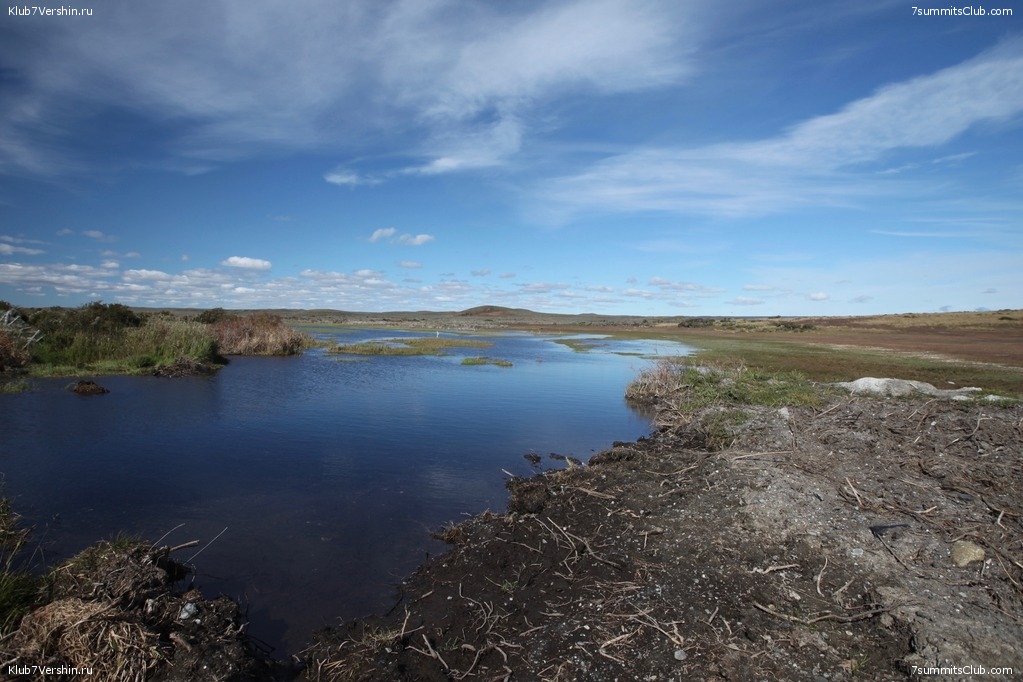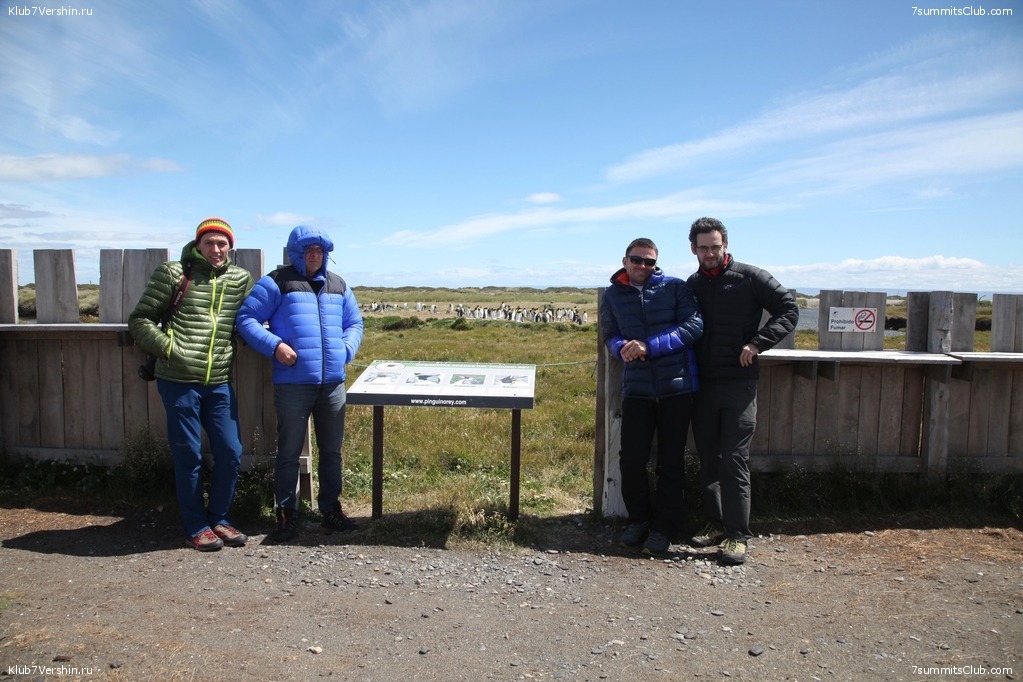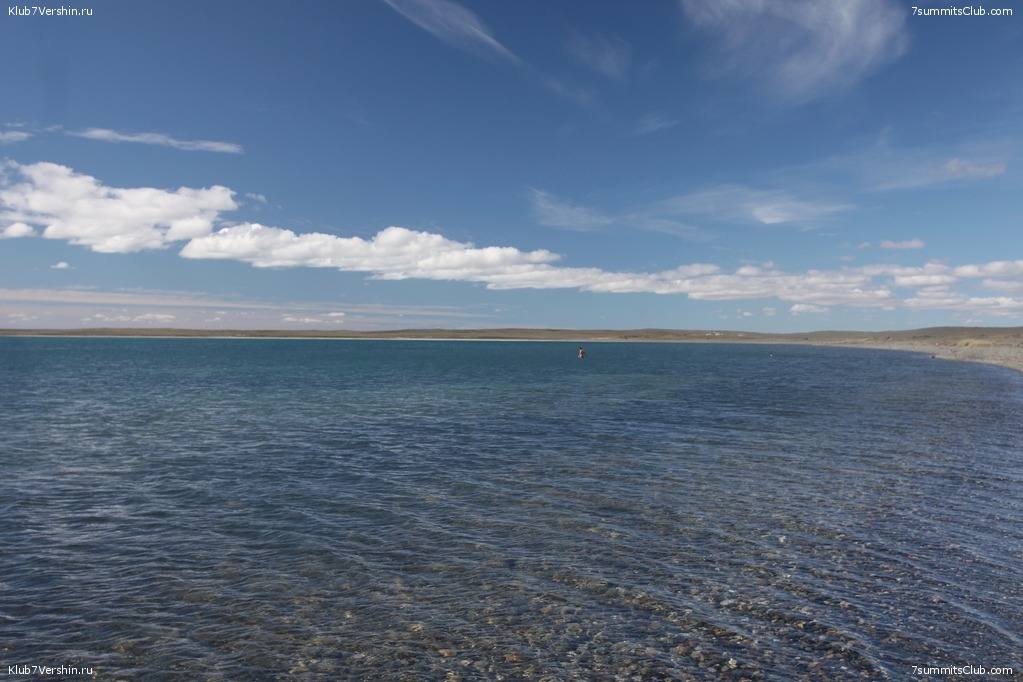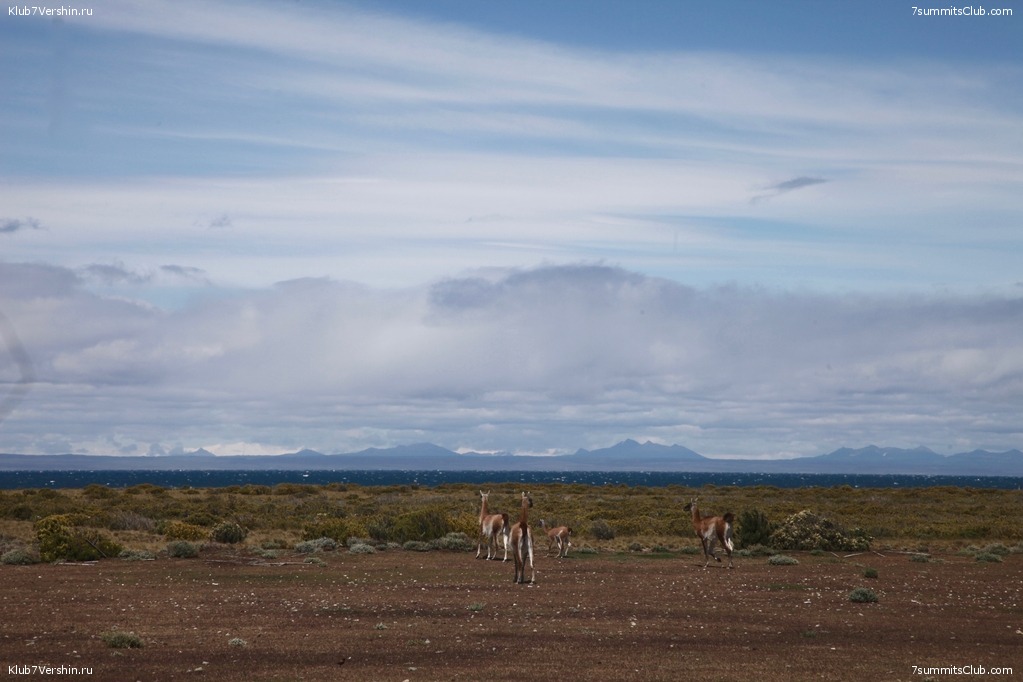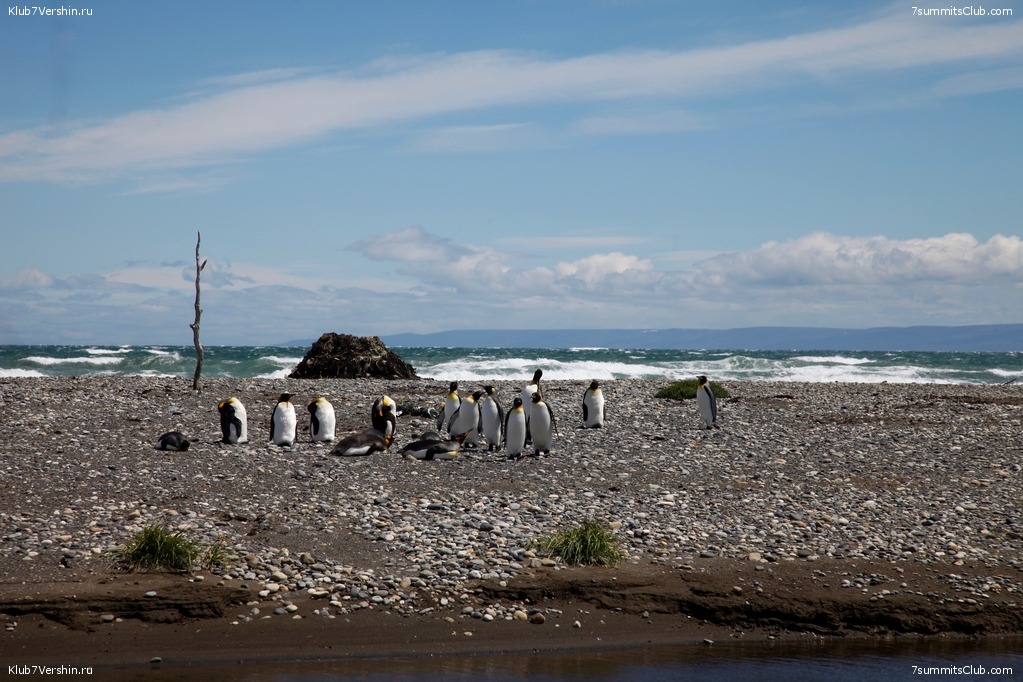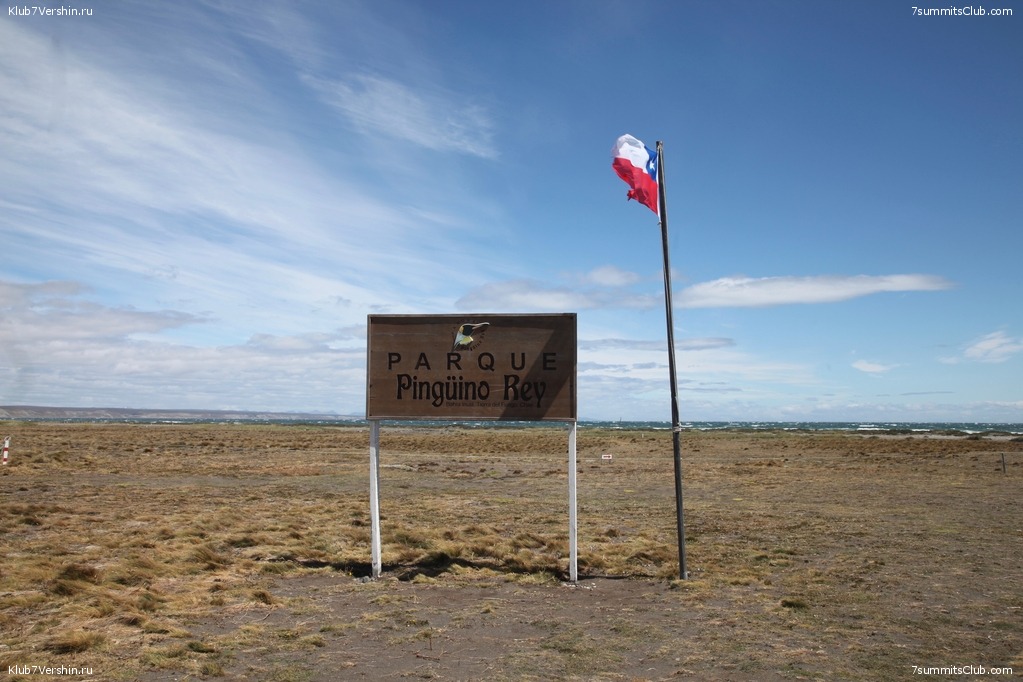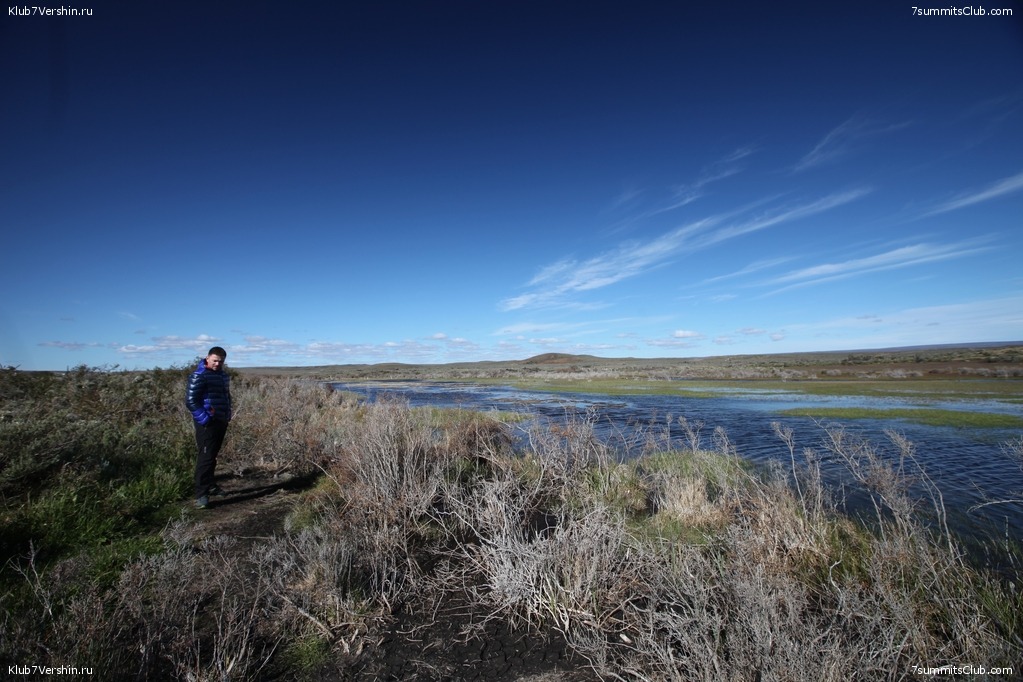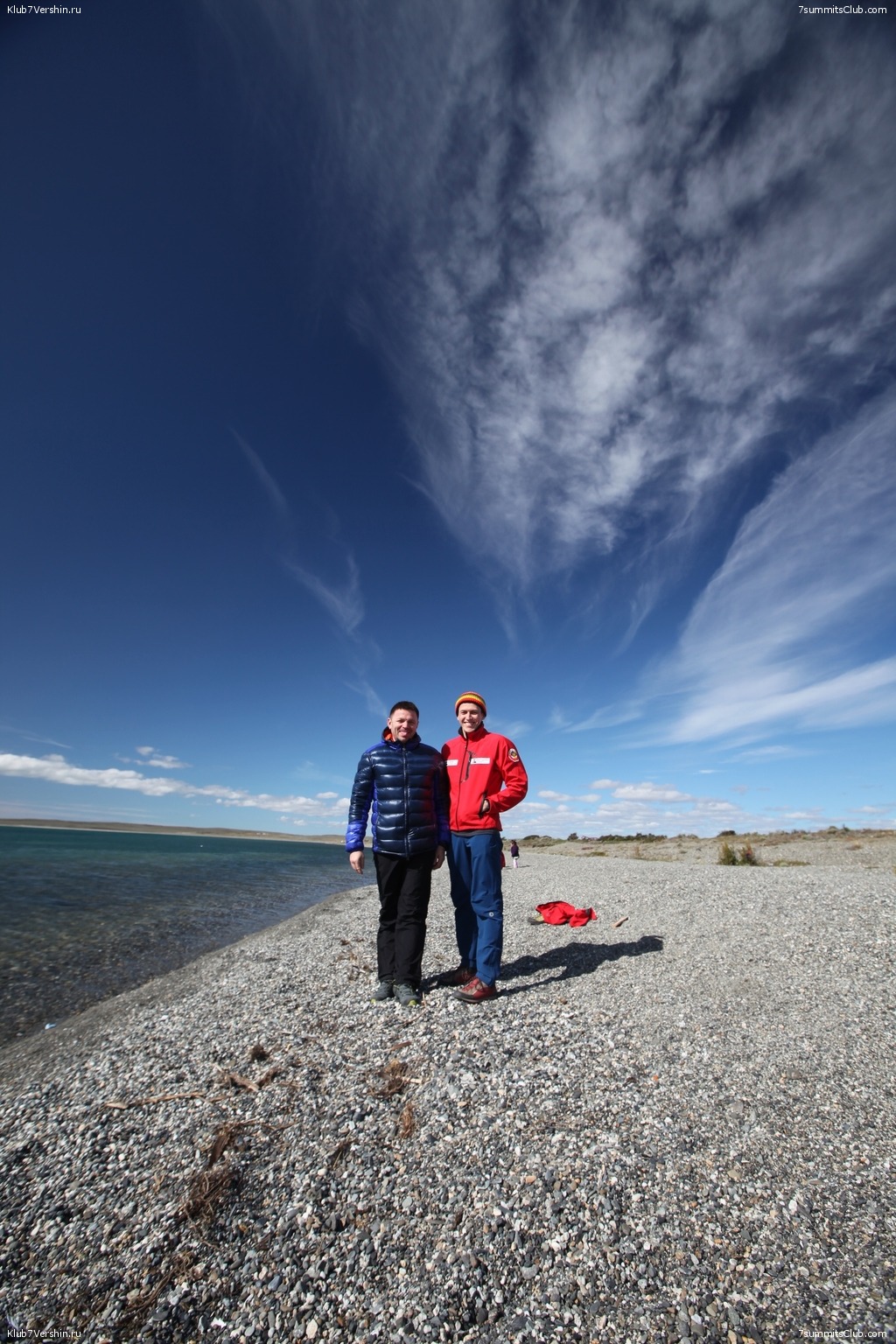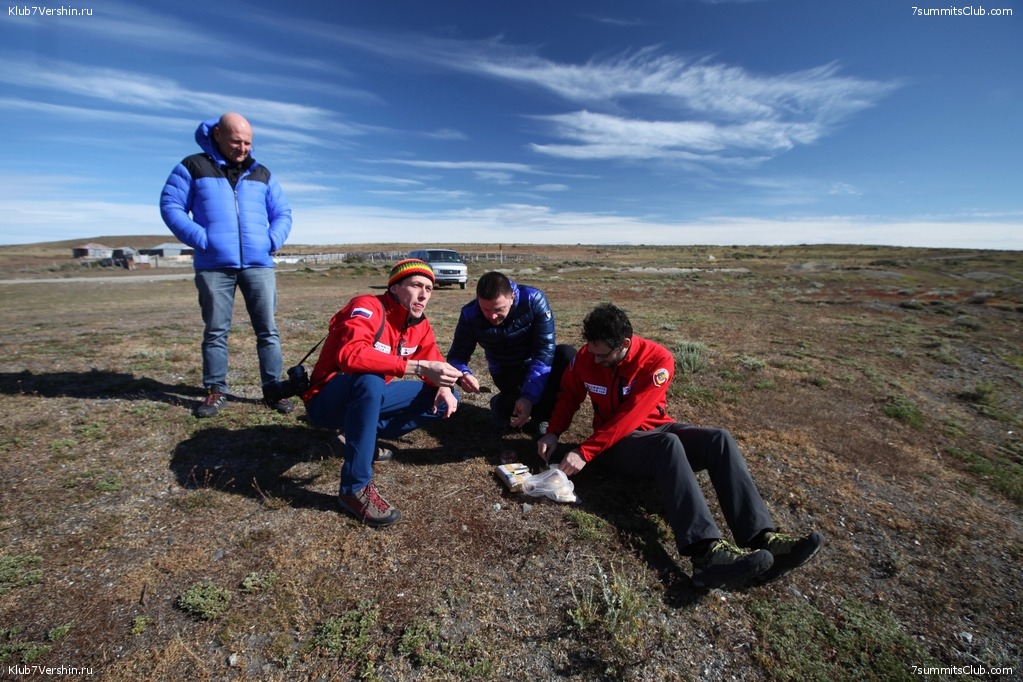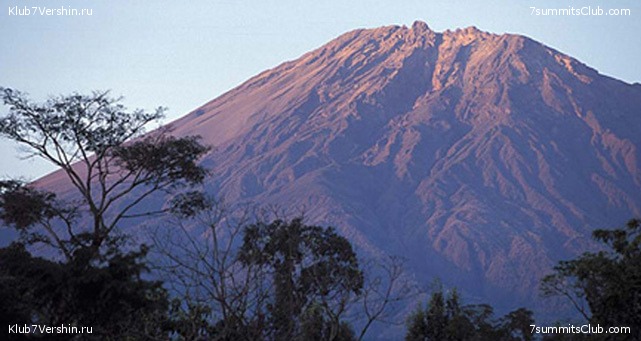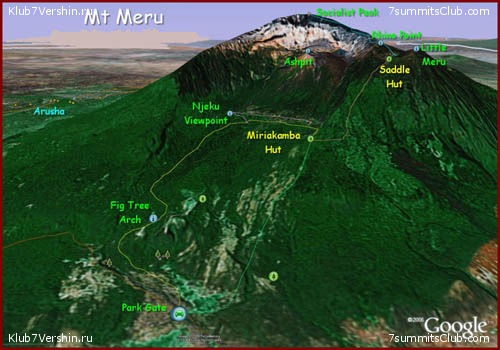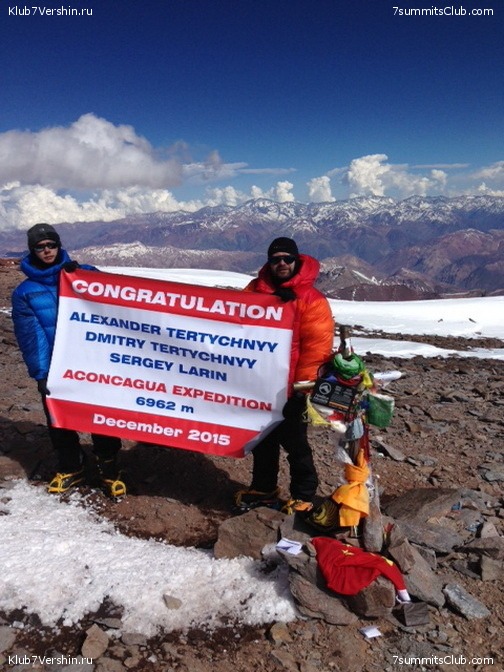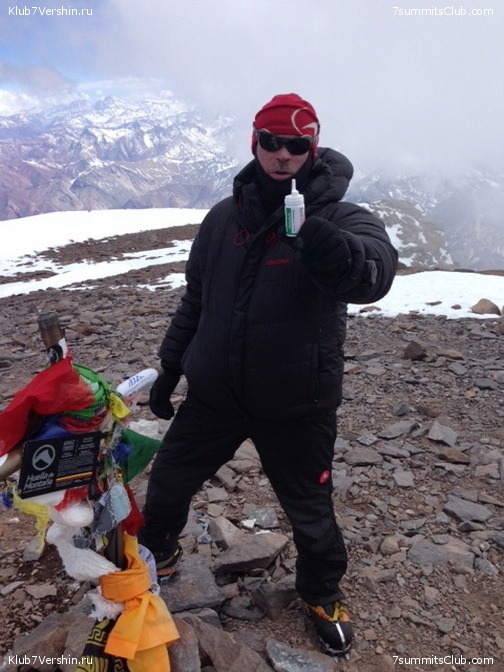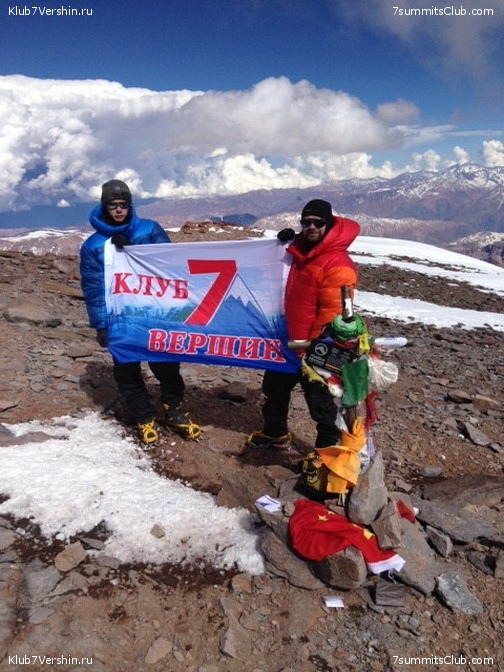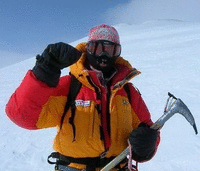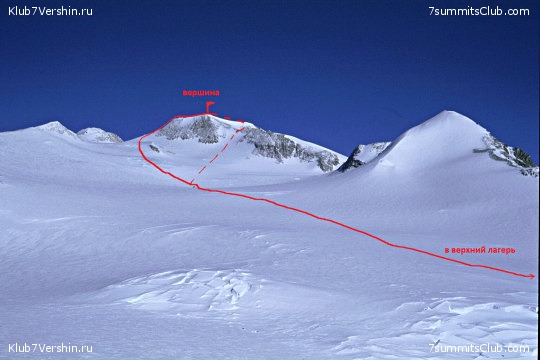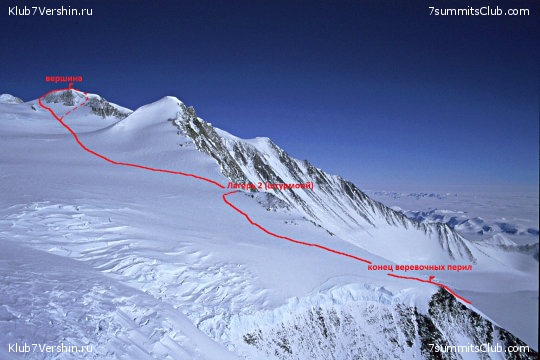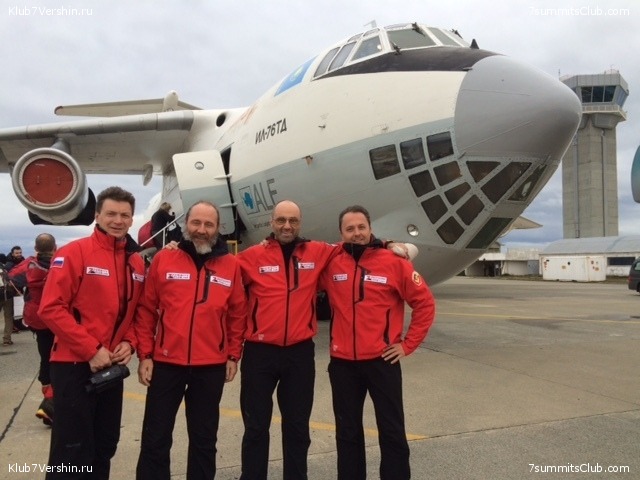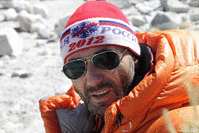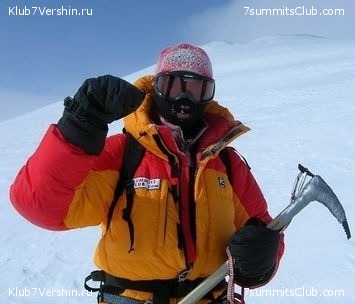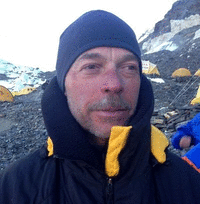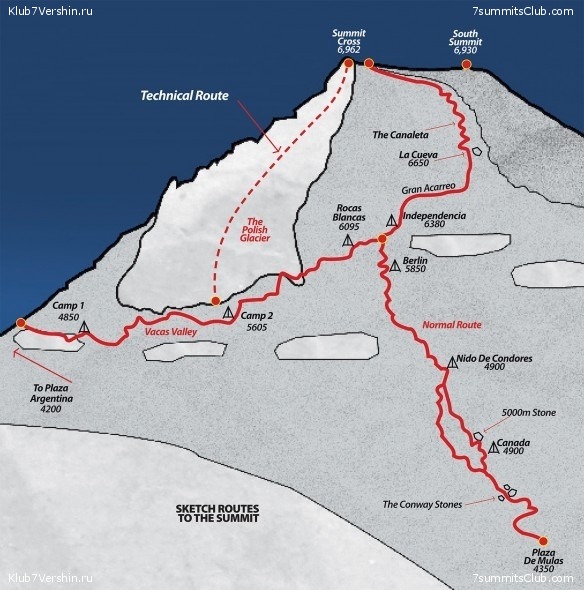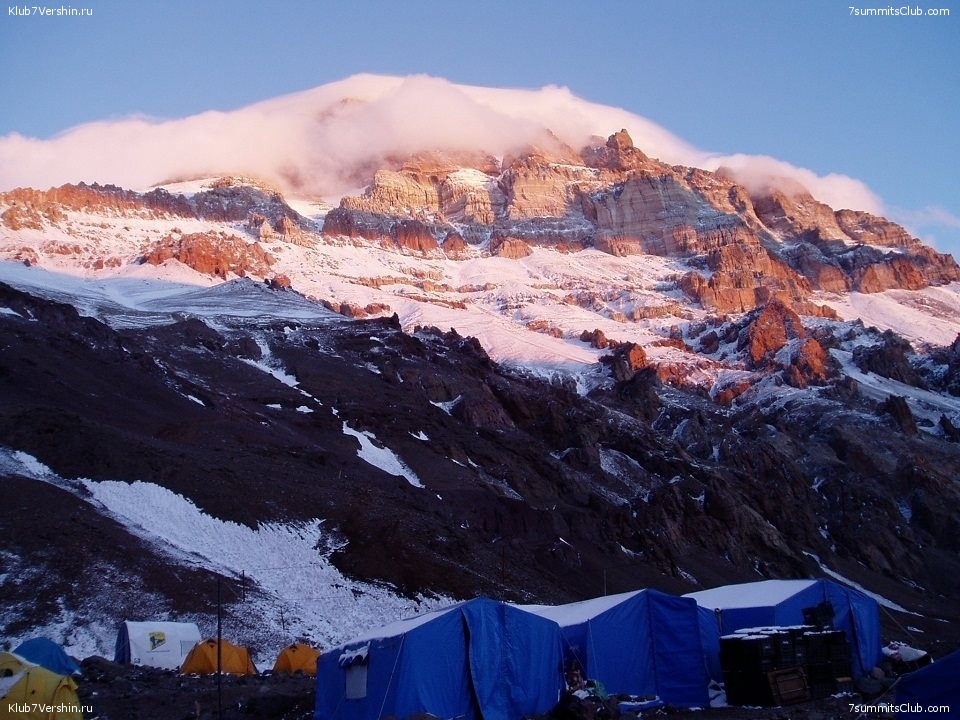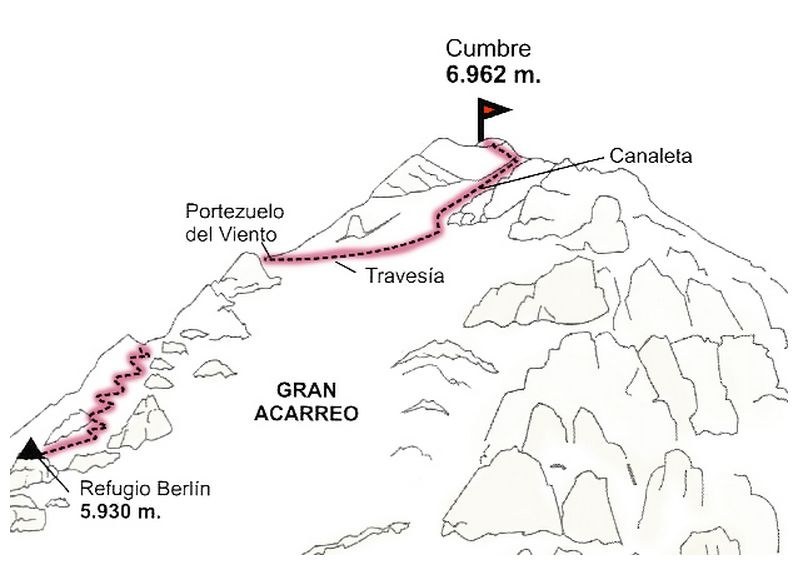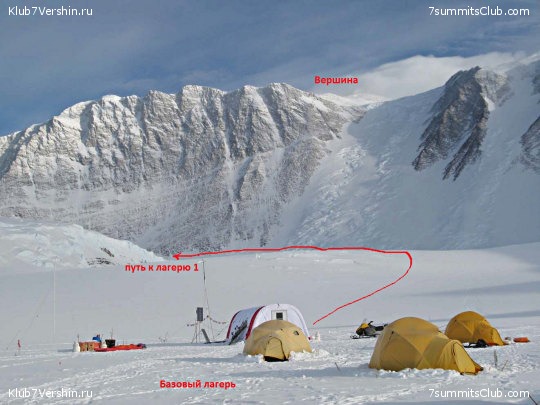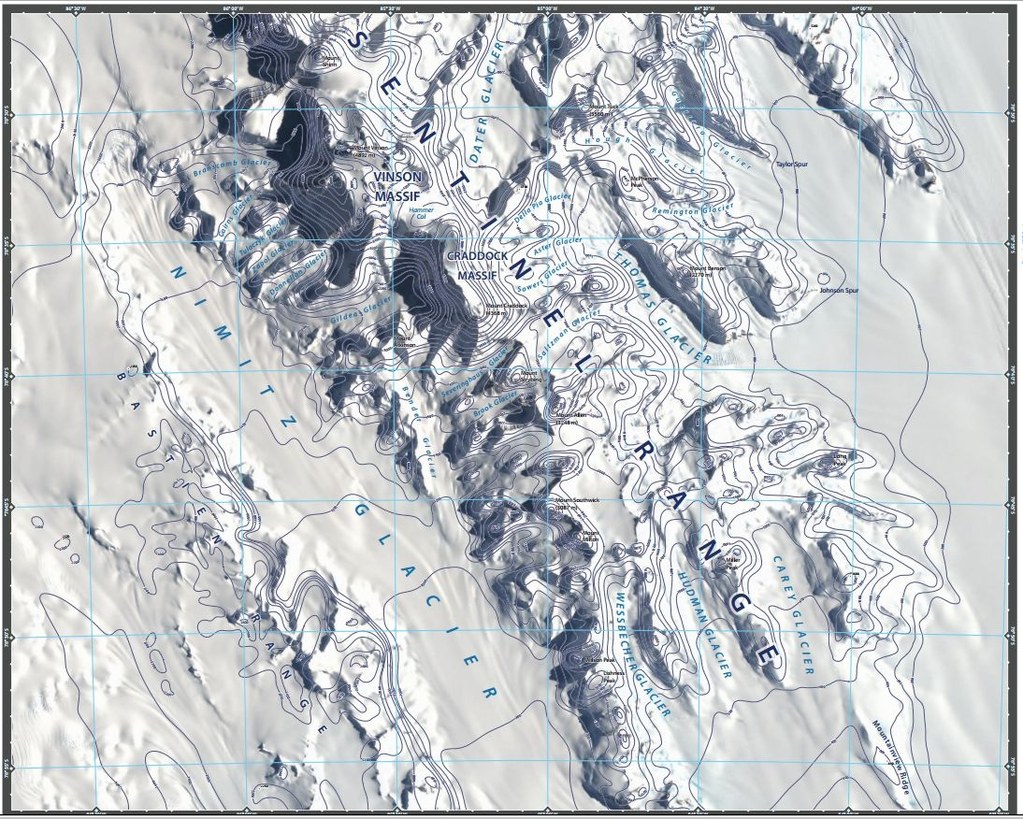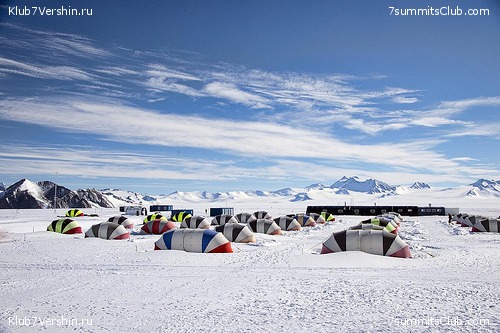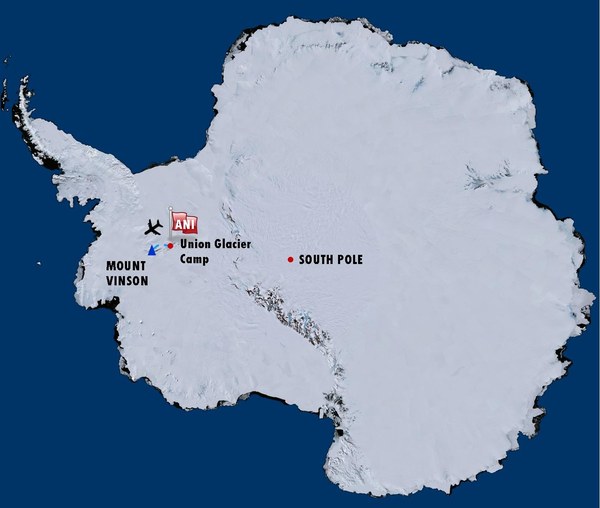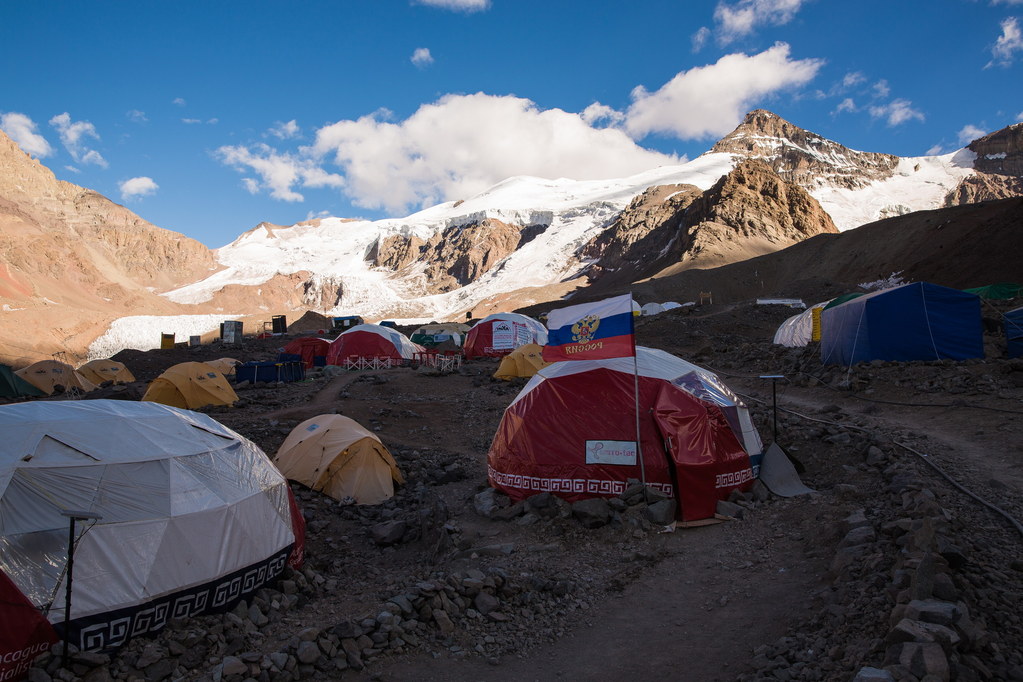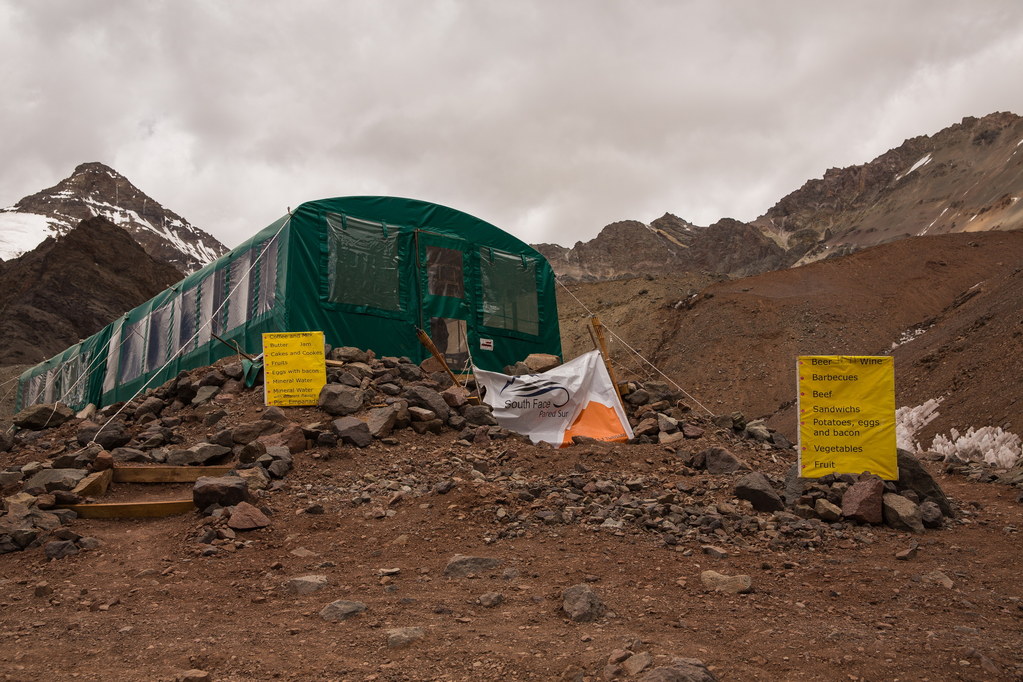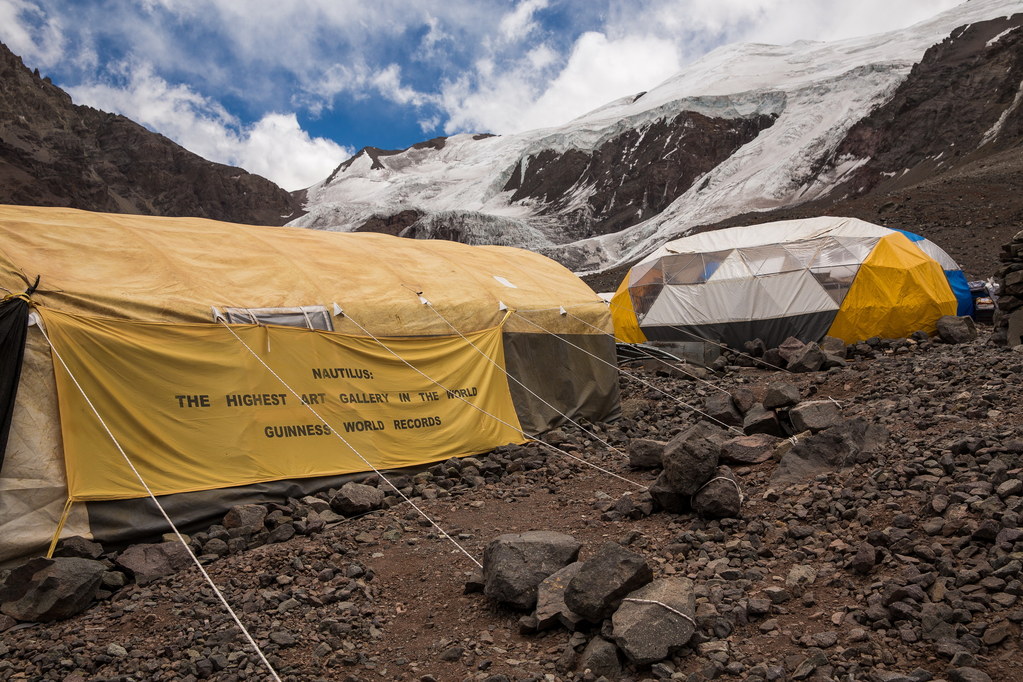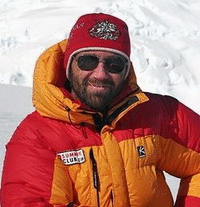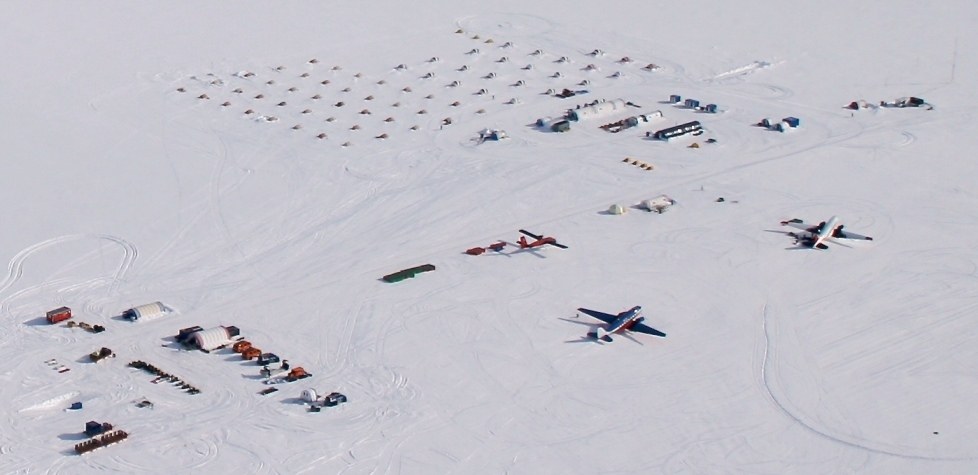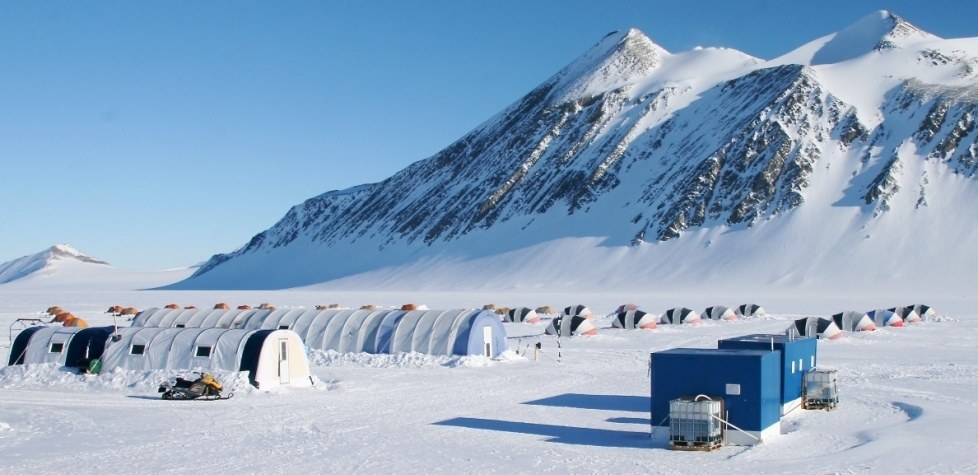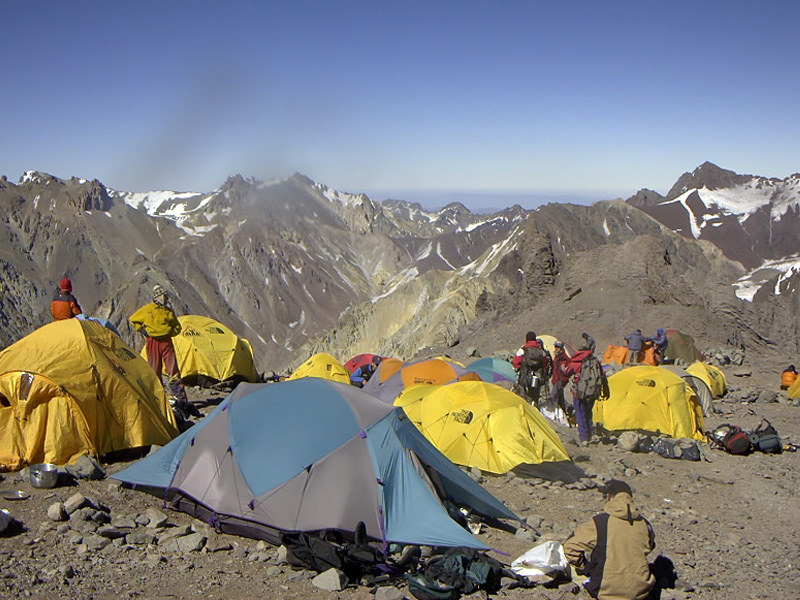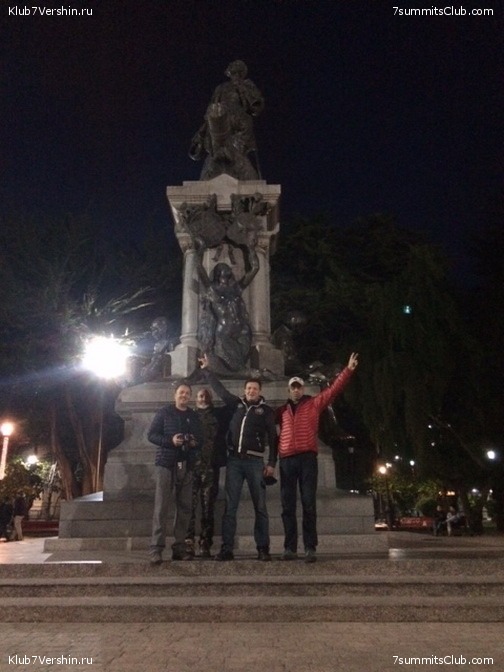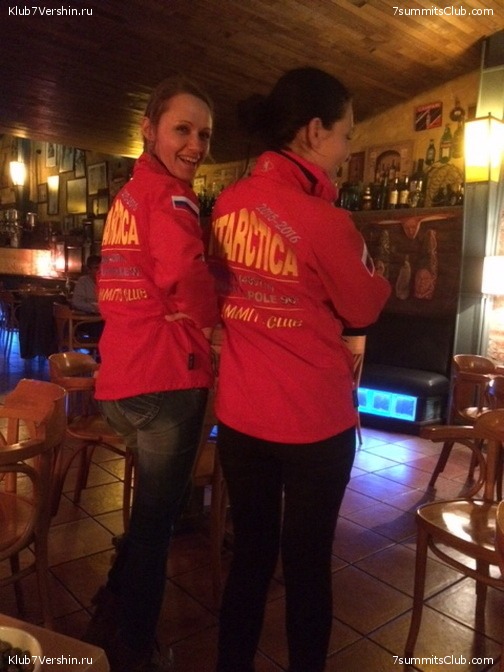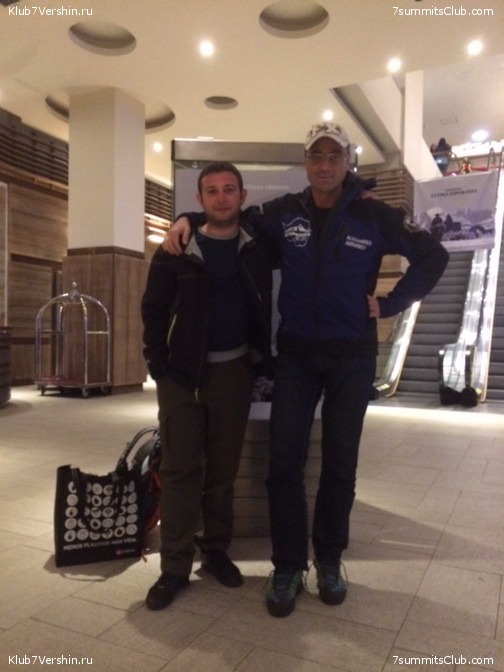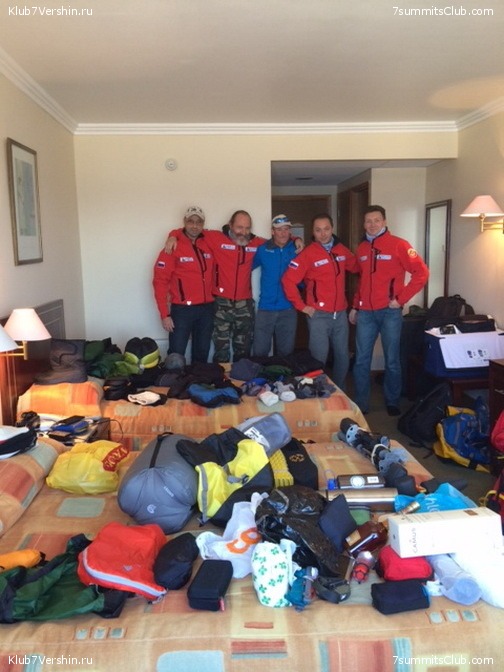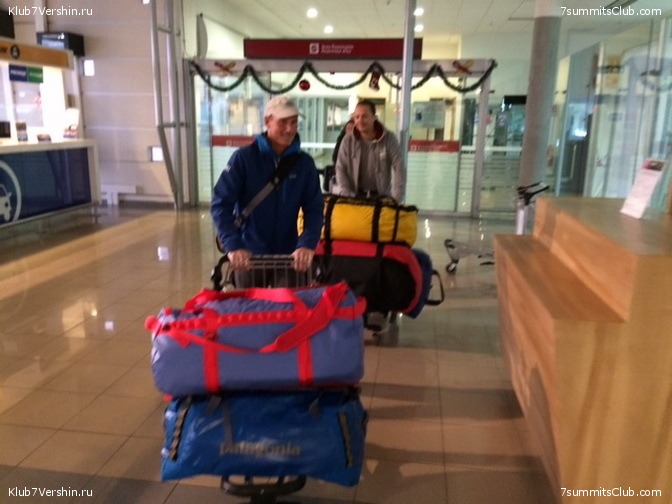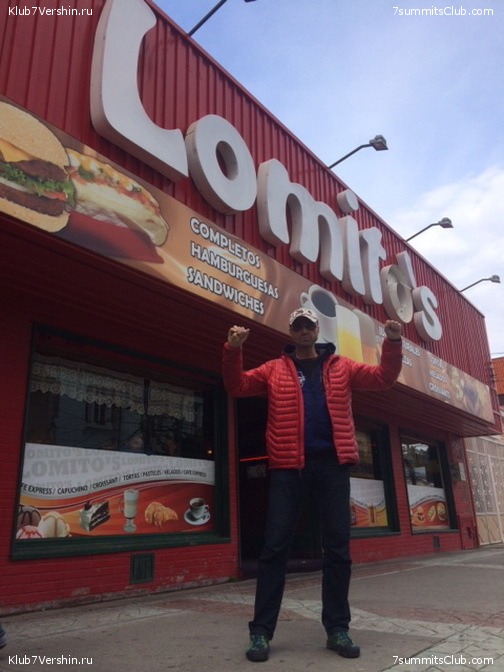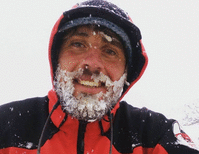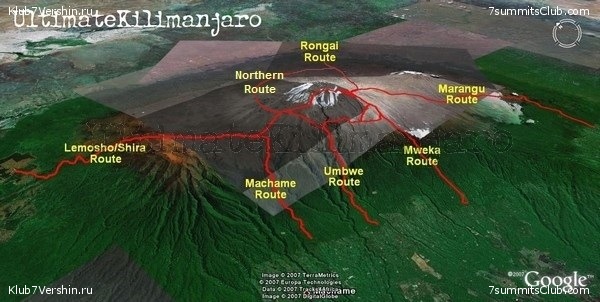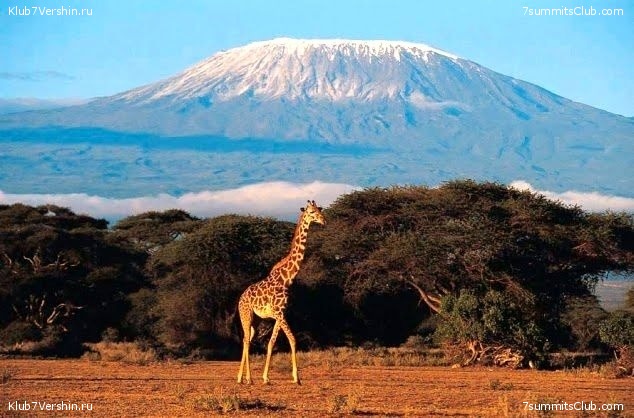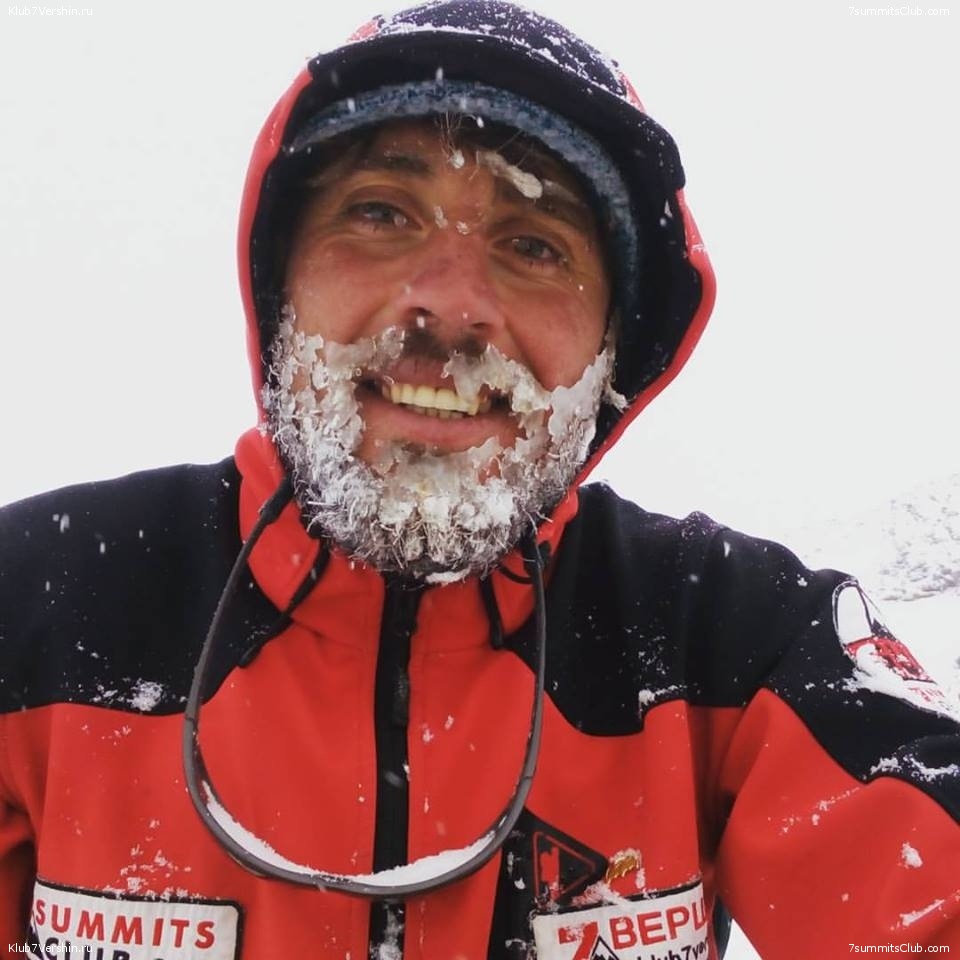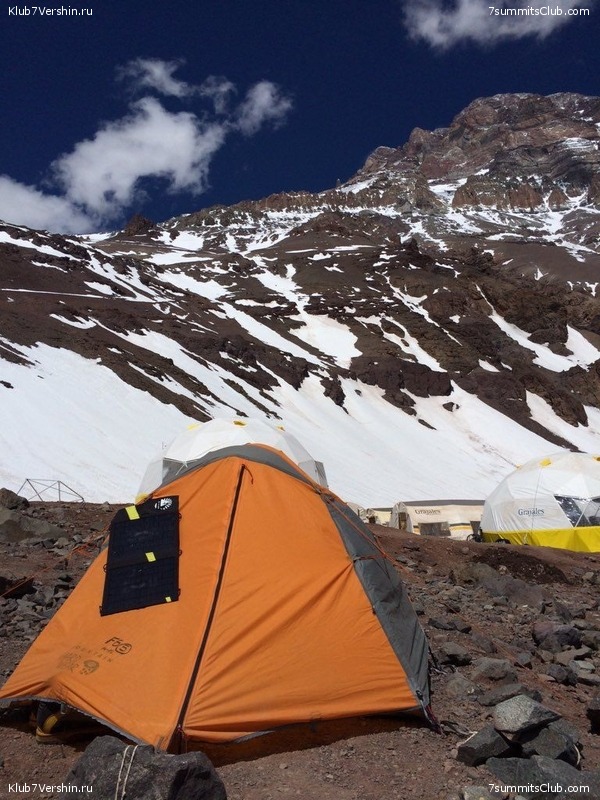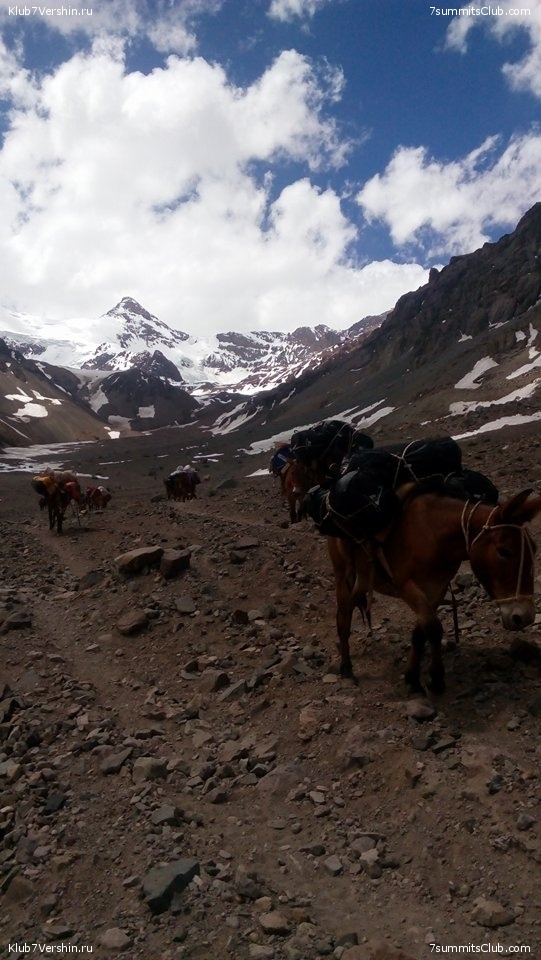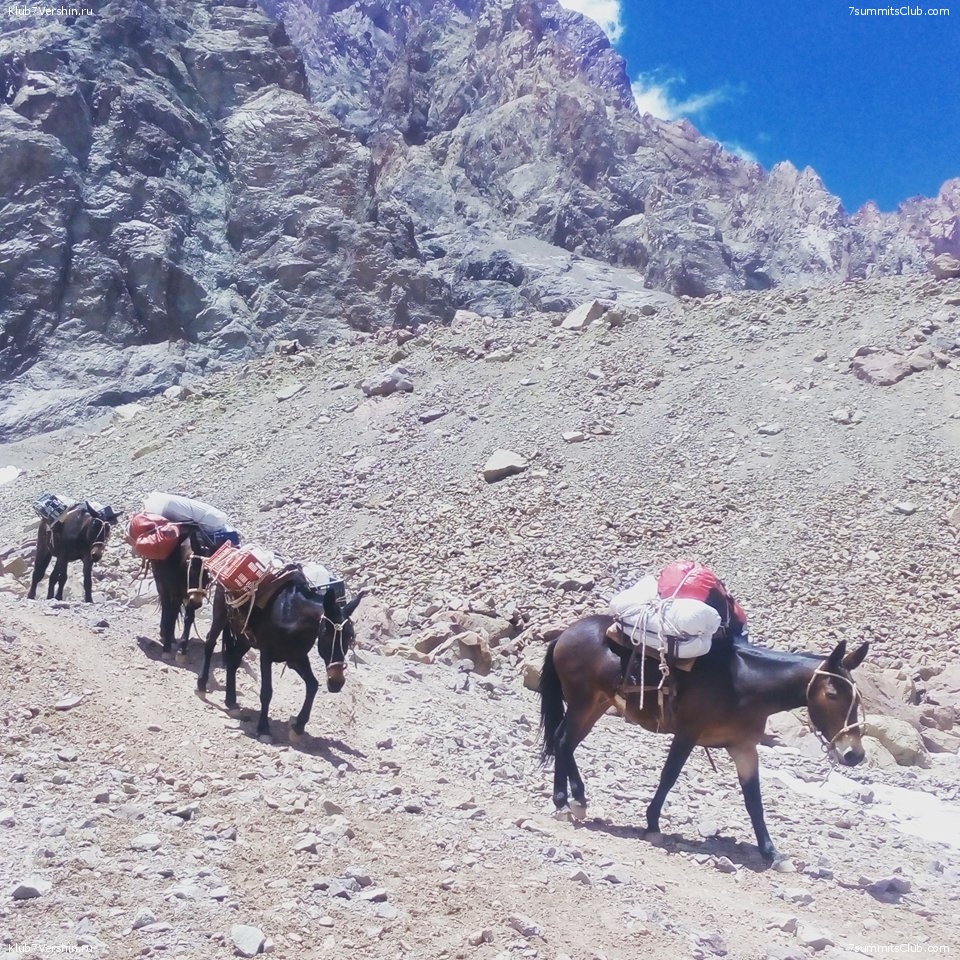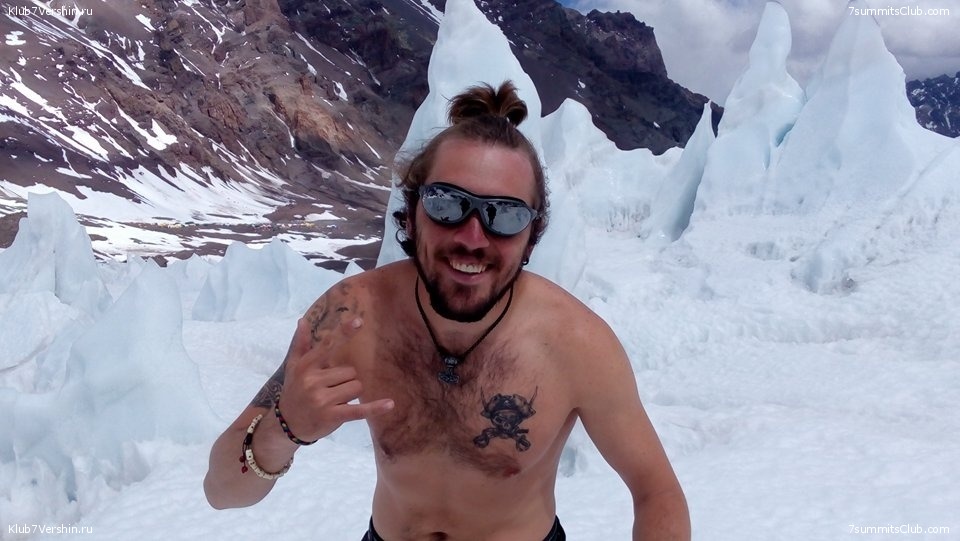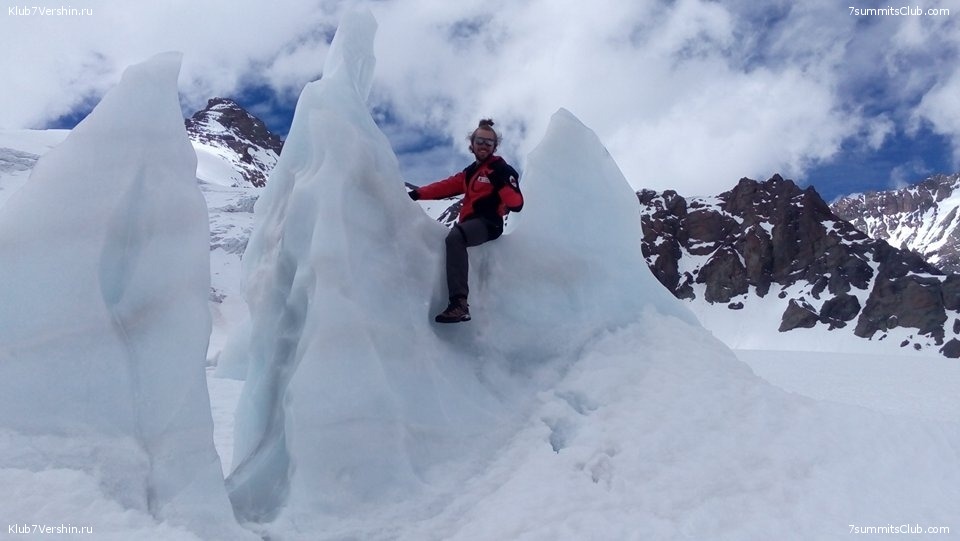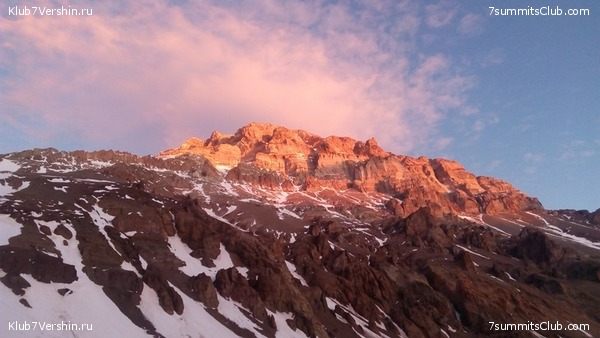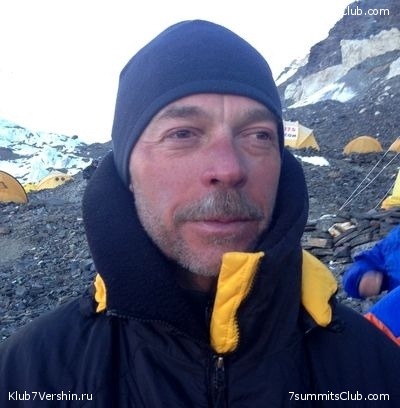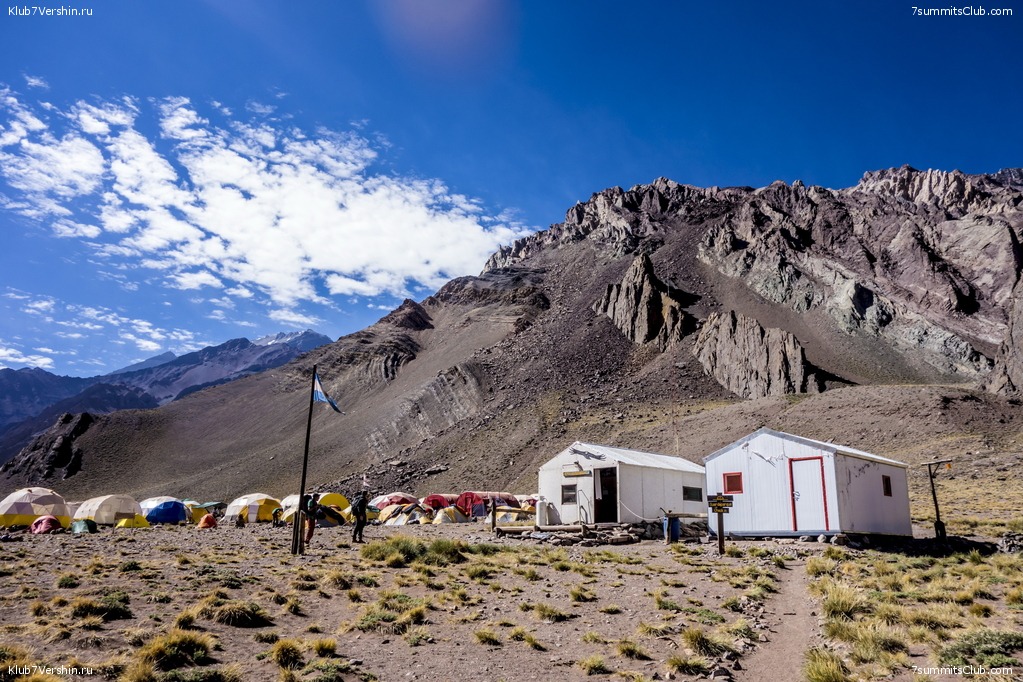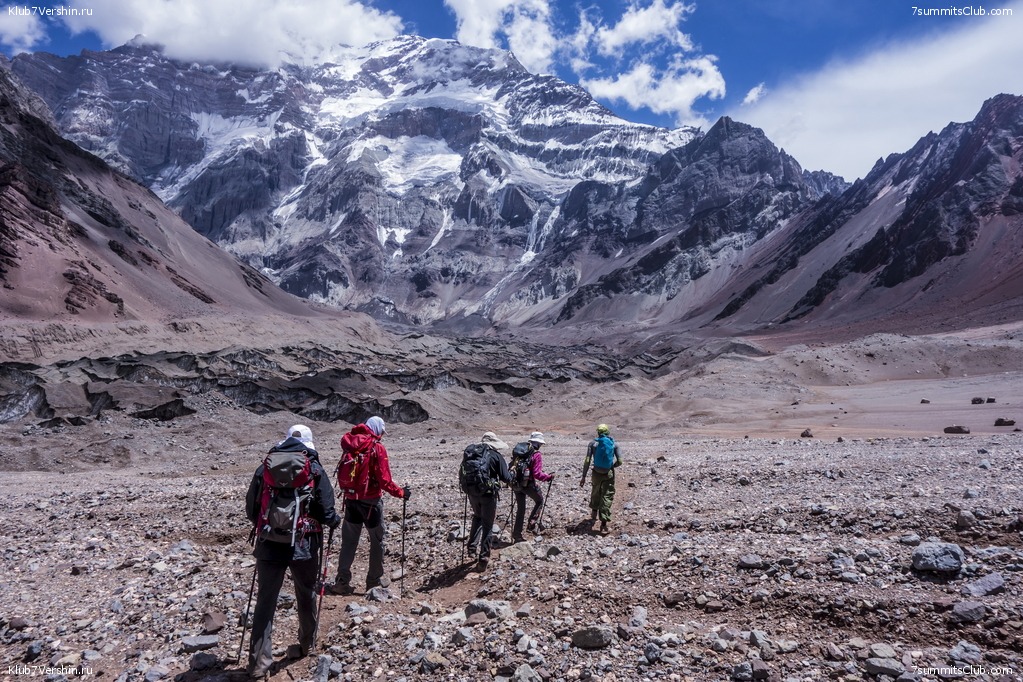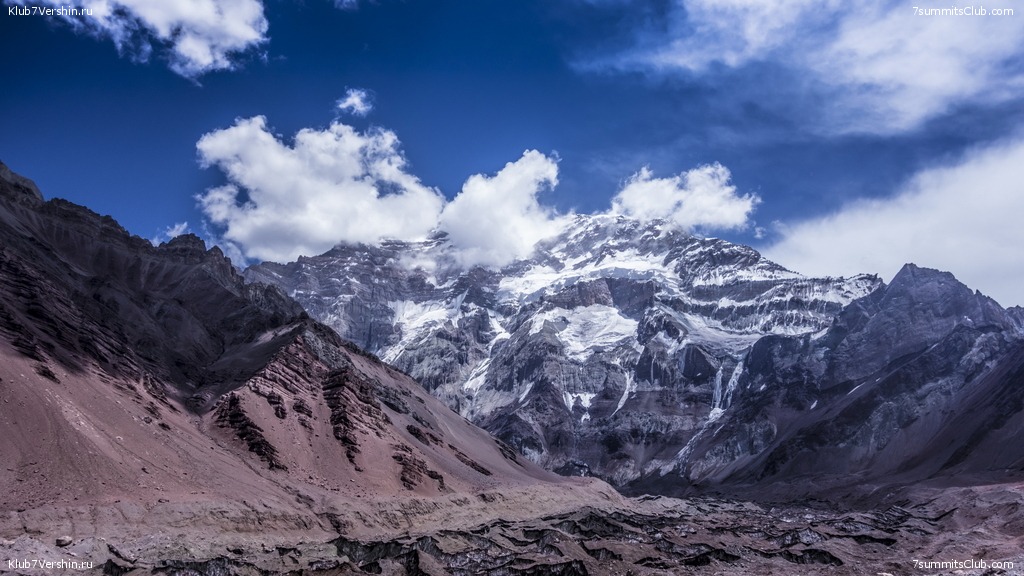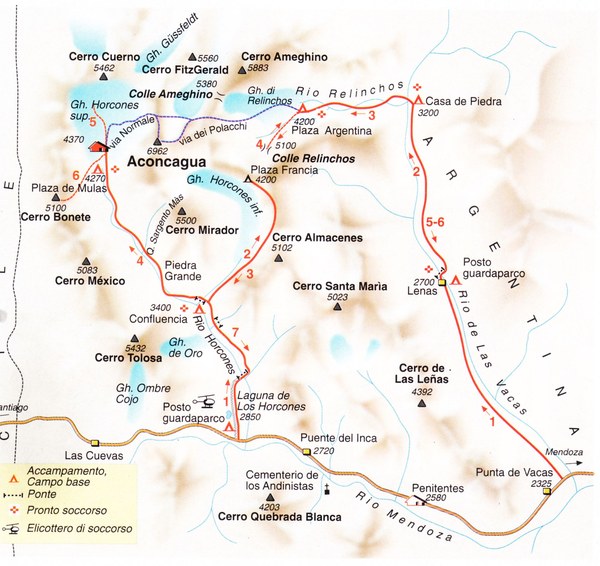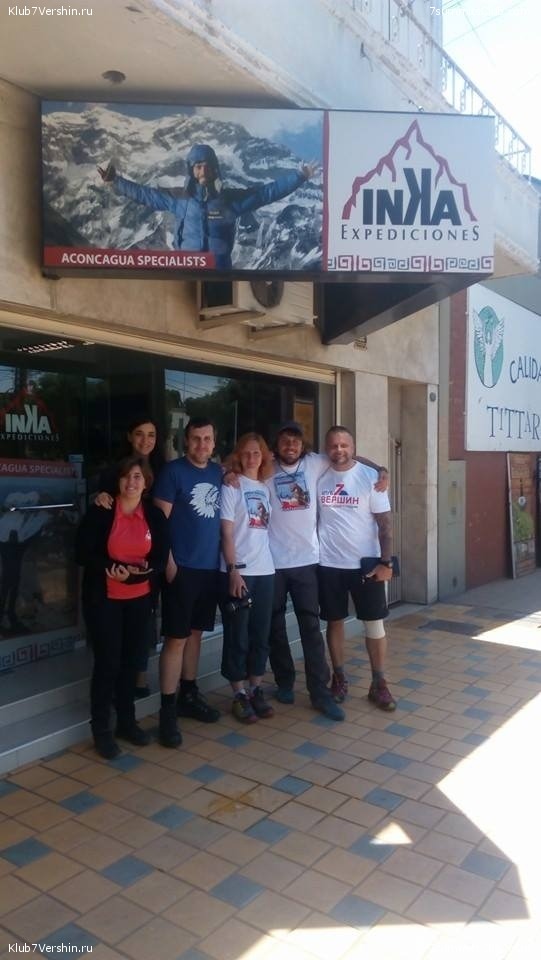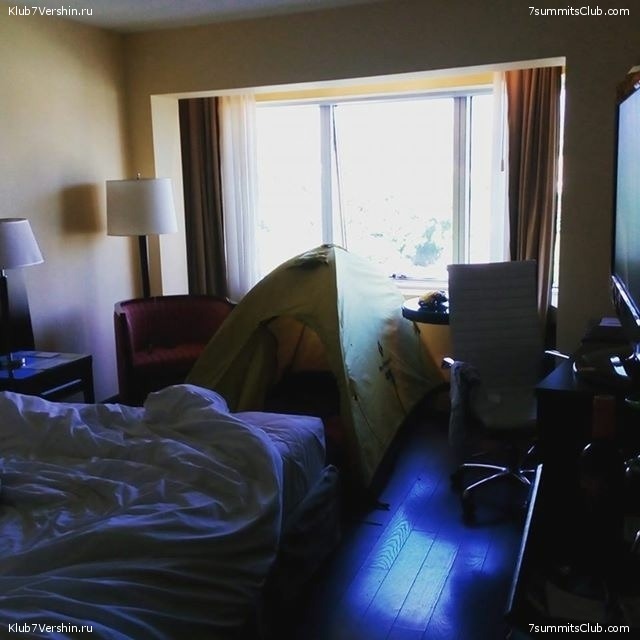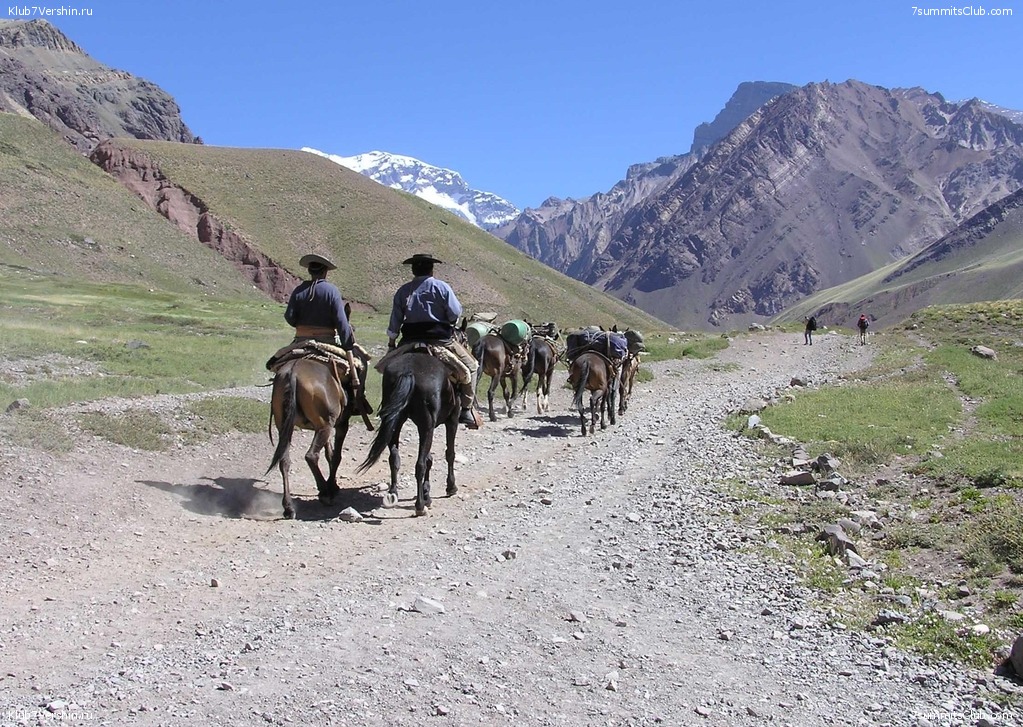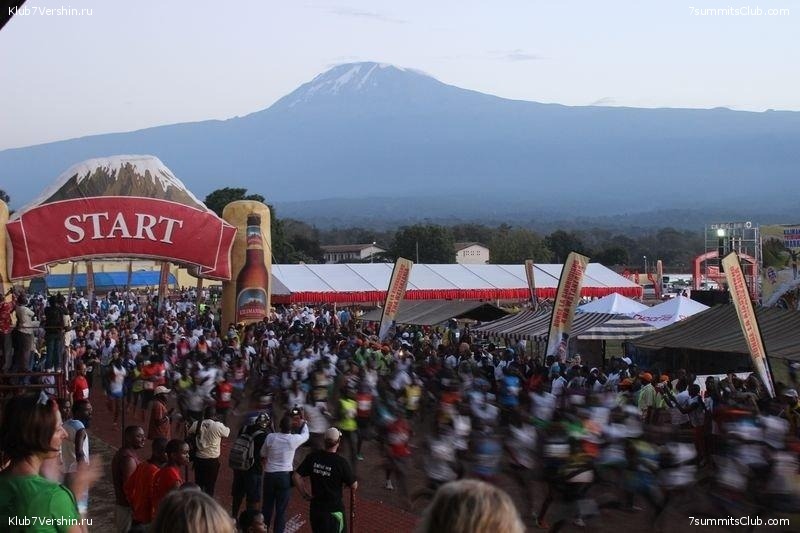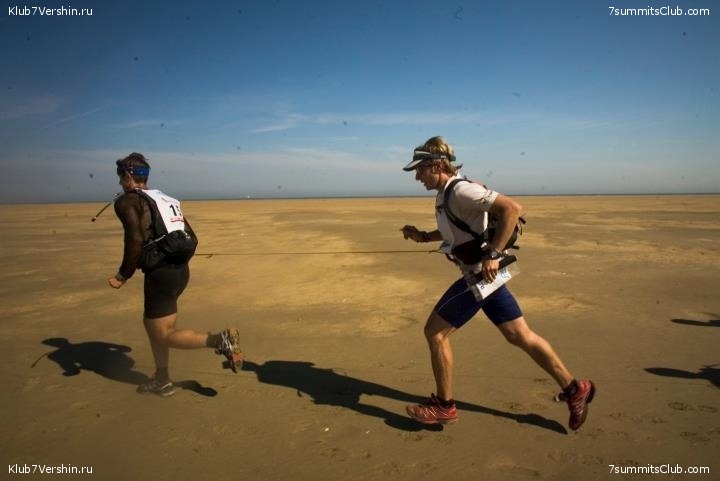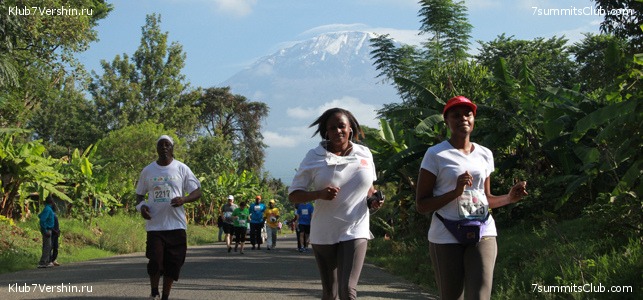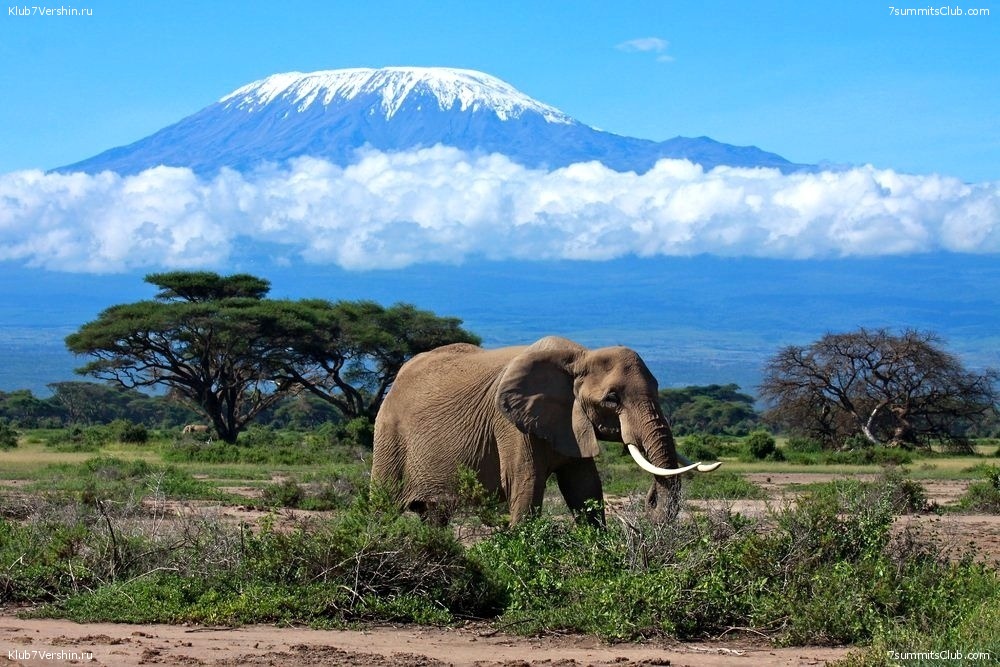"7 Summits + 2 Poles" project news - Page 132
Elena Abramova from Punta Arenas: the Vinson-2 group is preparing to fly to Antarctica. PHOTO
Vinson.
The last two days were very busy. We gained access to the nightlife of Punta Arenas culture, visited the Tierra del Fuego, a colony of king penguins, and some persons have even opened the beach season ... twice! All members feel good!Today ...
The last two days were very busy. We gained access to the nightlife of Punta Arenas culture, visited the Tierra del Fuego, a colony of king penguins, and some persons have even opened the beach season ... twice!
All members feel good!
Today we were in Puerto Bulnes. See pictures….
The German group of 7 Summits Club climbed Mount Meru
Kilimanjaro.
The team of our German friends successfully made acclimatization climbing to the top of the picturesque Mount Meru (the second highest in Tanzania - 4565 m). However, only 8 out of 10 people reached until the top point. One of the ...
The team of our German friends successfully made acclimatization climbing to the top of the picturesque Mount Meru (the second highest in Tanzania - 4565 m). However, only 8 out of 10 people reached until the top point. One of the participants twisted my ankle on the way down and even thought to abandon the ascent of Kilimanjaro. But he changed his mind and continued his plan in its original form.
The team also met Christmas at the hotel where waited for the other members, and had a rest after climbing Meru to gain strength for climbing Mount Kilimanjaro.
Photos from the summit of Mount Aconcagua from our guide Sergei Larin
Aconcagua.
The 7 Summits Club guide Sergey Larin sent photos from the ascent to Aconcagua. On the top there were: Alexander Tertychnyi, Dmitry Tertychnyi (14 years) and guide Sergey Larin
The 7 Summits Club guide Sergey Larin sent photos from the ascent to Aconcagua. On the top there were: Alexander Tertychnyi, Dmitry Tertychnyi (14 years) and guide Sergey Larin
SUMMIT! Alexander Abramov reports from the summit of Mount Vinson!
Vinson.
Hello! This is Alex Abramov. I run my report from the summit of the Massif Vinson. We are the first and only team, which today climbed to the highest point. The weather is beautiful, and it is almost no wind! I did not even put a down ...
Hello! This is Alex Abramov. I run my report from the summit of the Massif Vinson. We are the first and only team, which today climbed to the highest point. The weather is beautiful, and it is almost no wind! I did not even put a down jacket ... there are lovely views around, however, some clouds, but no wind .. We took a chance, went out in bad weather, and guessed. At the top are staying now: Alexey, Dmitry, Vasily, and our American friends ANI guides Scott, Næss and Andy. And, of course, your humble servant, Alexander Abramov.
Now we begin the descent, we hope to be at Union Glacier at 29th. All Goodbye!
Alex Abramov from the High camp Vinson Massif – we are resting before summit bid!
Vinson.
Hello! This is Alexander Abramov from Antarctica, from the High camp on the of Vinson Massi. Despite the fact that we were promised today for not very good weather, strong wind, we were the only team that dared to go up. And now we came to ...
Hello! This is Alexander Abramov from Antarctica, from the High camp on the of Vinson Massi. Despite the fact that we were promised today for not very good weather, strong wind, we were the only team that dared to go up. And now we came to the assault camp, surprise - is absolute calm! We hope that tomorrow morning we will be able to climb to the top. But still, of course, all is in the hands of God. So now we go to sleep and just in 7 hours we hope to start for ... the assault. Bye! Wait for new information!
SUMMIT! Sergei Larin’s Group climbed the summit of Mount Aconcagua. Congratulations!
Aconcagua.
Hi Seven Summits Club! Today, all members of our small expedition of three men climbed Mount Aconcagua. Remarkably, in the expedition there was a 14-year-old boy from Russia - it is the record for age. But climbing was given to us is not ...
Hi Seven Summits Club! Today, all members of our small expedition of three men climbed Mount Aconcagua. Remarkably, in the expedition there was a 14-year-old boy from Russia - it is the record for age. But climbing was given to us is not easy. The climb took 12 hours. But it ended okay, now we are in Berlin, in the camp, resting. And we went down just on 2 and a half hours ... all are alive and well, more details - on this later. So long! Sergei Larin.
Members: Alexander Tertychny father, Dmitry Tertychnyi son - 14 years, guide Sergey Larin.
Group Alexander Abramov arrived, finally, at the foot of Mount Vinson
Vinson.
Alexander Abramov: Hello! I want to inform you that we are in Antarctica. What we got today, flew to the base camp Vinson Massif ... Almost immediately, immediately we went to the camp ... 1.
Alexander Abramov: Hello! I want to inform you that we are in Antarctica. What we got today, flew to the base camp Vinson Massif ... Almost immediately, immediately we went to the camp ... 1.
Alexander Abramov and the group of 7 Summits Club continues to stay in the Union Glacier Camp
Vinson.
Hello! This is Alex Abramov from Antarctica. In Antarctica bad weather continued, the snow falls, hardly see the surrounding mountains. This continues for the third day, and that the worst thing is that in the Vinson Massif ... it is also ...
Hello! This is Alex Abramov from Antarctica. In Antarctica bad weather continued, the snow falls, hardly see the surrounding mountains. This continues for the third day, and that the worst thing is that in the Vinson Massif ... it is also all covered with clouds, and also snowing. Therefore flights now not take place and we are in Union Glacier Base Camp. We eat well here, in principle, we have comfortable conditions. But ... it is high time to fly. It seems that the bad weather will last a few more days. Maybe we will be able to escape.
Bye! Thank you! And a Merry Christmas!
Group of Sergei Larin went to rest in the base camp Plaza de Mulas
Aconcagua.
Sergei Larin, a guide of the 7 Summits Club: Welcome Seven Summits! Shower in Plaza de Mulas costs $ 10. 15 minutes of bad working of the Internet and two cans of beer are also $ 10. But after three days of acclimatization in Nido de ...
Sergei Larin, a guide of the 7 Summits Club: Welcome Seven Summits! Shower in Plaza de Mulas costs $ 10. 15 minutes of bad working of the Internet and two cans of beer are also $ 10. But after three days of acclimatization in Nido de Condores at 5500, all that we have to use. As you understood, we went down from an acclimatization outing to rest. All is going along the plan.
Antarctica: Due to bad weather the group of Alex Abramov is delayed on the base camp Union Glacier
Vinson.
Hello! This is Alexander Abramov from Antarctica. All our day was held in preparation for the flight to an Mount Vinson. But this did not happen, the weather turned bad. Now we are still sitting on the base of Union Glacier ... The weather ...
Hello! This is Alexander Abramov from Antarctica. All our day was held in preparation for the flight to an Mount Vinson. But this did not happen, the weather turned bad. Now we are still sitting on the base of Union Glacier ... The weather will give us finally a chance to sleep. We almost do not sleep three days, always moving somewhere. Today we went 15 kilometers from the base of the Union Glacier. There we ran the drone and did some shooting. We also played miniature golf. Maybe this was the first blow with a stick in Antarctica. Although I doubt it.
Well, in general, the team has a cheerful mood. And if tomorrow we will not be able to fly to Vinson Massif, the day after tomorrow there is a plan to fly to the South Pole. It will take approximately one day. The weather at the base camp is not bad. But the weather in the mountains and around - bad. There is poor visibility ... around. As a result, our plans are not clear.
Sergei Larin, from the camp Nido de Condores Aconcagua: acclimatization is going according to the plan
Aconcagua.
Hello, Seven Summits! Get information on Aconcagua. We are OK, we are working on a plan, getting acclimatization for the standard version. Yesterday we spent the night at the Plaza Canada, today we climbed to Nido de Condores. All members ...
Hello, Seven Summits! Get information on Aconcagua. We are OK, we are working on a plan, getting acclimatization for the standard version. Yesterday we spent the night at the Plaza Canada, today we climbed to Nido de Condores. All members are in good conditions. What is proved by two facts. First, we were ahead of the porters. And second, now while the water is boiled, members read the literature. That is, everything is fine, everything is going according to the plan. So long! Sergei Larin.
Alex Abramov almost from Antarctica! Hooray! Season begins... PHOTO
Vinson.
Alex: Only we (Lena Abramova) said farewell to Jamil Manizade for the flight to the South Pole, and visited Fort Bulnes, as members of our first group arrived in Punto Arenas. They are Vasily, Alexey and Dmitry. We are at a monument to ...
Alex: Only we (Lena Abramova) said farewell to Jamil Manizade for the flight to the South Pole, and visited Fort Bulnes, as members of our first group arrived in Punto Arenas. They are Vasily, Alexey and Dmitry.
We are at a monument to Magellan surrounded by beautiful ladies - Christine and Helen.
This morning there was a check the equipment together with a guide Scott Wolums.
The audit showed the full readiness of the team.
So everyone with peace of mind went to visit the penguins on Magdalena Island.
I went to buy the products that tomorrow we will ship for loading. For a while! ..
Vladimir Kotlyar from Plaza de Mulas camp: we have climbed to the top in 5 hours, fast enough. We are now in the Plaza de Mulas, you could not believe it!
Aconcagua.
Hello everybody! It is Vladimir Kotlyar, Climb Aconcagua program. Today I and Oksana went to the top of the highest point in South America. It was cold, but windless. We caught the weather window, it is cool. We climbed up for 5 hours - ...
Hello everybody! It is Vladimir Kotlyar, Climb Aconcagua program. Today I and Oksana went to the top of the highest point in South America. It was cold, but windless. We caught the weather window, it is cool. We climbed up for 5 hours - rather quickly. We are now in the Plaza de Mulas, you could not believe it ... we sit, eat pizza, drink beer. And now, here we met Sergei Larin, in general, we celebrate our climb. Adios! Until we meet again in January. All the best!
Kilimanjaro season is in full swing: we have three groups in a row and by different routes ...
Kilimanjaro.
It so happened that three groups of the 7 Summits Club, one after another, come to Kilimanjaro. At the forefront there is the group consisting of: Vasily Kuznetsov, Vyacheslav Bryuhno and Alexander Konstantinovsky. They're climbing ...
It so happened that three groups of the 7 Summits Club, one after another, come to Kilimanjaro. At the forefront there is the group consisting of: Vasily Kuznetsov, Vyacheslav Bryuhno and
Alexander Konstantinovsky. They're climbing Kilimanjaro by Marangu route, today they should be in the Horombo hut. Then father and son Romas and Lucas Rakcheev began his march to the Kilimanjaro, they go by the Lemosho route.
Today, on December 14, two new members are scheduled to fly in Tanzania, they are planning to climb Kilimanjaro by the Machame route.
Vladimir Kotlyar from Plaza de Mulas camp: we continue climbing, despite the fact that we are only two now
Aconcagua.
Hello! It is Vladimir Kotlyar from Aconcagua. Our climbing partners have decided to fly home for personal reasons. They flew in a helicopter. And we've got two. Here, unfortunately. But we did not finish the expedition ... Now we sit down ...
Hello! It is Vladimir Kotlyar from Aconcagua. Our climbing partners have decided to fly home for personal reasons. They flew in a helicopter. And we've got two. Here, unfortunately. But we did not finish the expedition ... Now we sit down in Plaza de Mulas, at an altitude of 4300 and expected weather. We've got sweeps, the blizzard. The wind is very strong at the top. On top along the weather forecast the wind is now 70-75 ... We will be waiting for the weather and go upstairs. Adios! All the best!
Vladimir Kotlyar reports from the Canada camp on the slopes of Aconcagua: we climbed briskly, despite the difficult conditions
Aconcagua.
Hello! This is Vladimir Kotlyar, the guide of the 7 Summits Club on the expedition to Aconcagua. Today our friendly team climbed up for the first high-altitude camp at an altitude, it is Plaza Canada at 4800 meters. Our goal is to spend the ...
Hello! This is Vladimir Kotlyar, the guide of the 7 Summits Club on the expedition to Aconcagua. Today our friendly team climbed up for the first high-altitude camp at an altitude, it is Plaza Canada at 4800 meters. Our goal is to spend the night for better acclimatization and gradual, step-up recovery. We went fast - 3 hours, set up tents, have dinner. And now we have a rest, to boil water, drown snow. In general, we collect water for the evening and for the morning.
Today we have snow, blizzard, snowstorm. But never mind, all is well: we got a real northern adventure. Adios!
The 7 Summits Club guide Sergey Larin flew to Argentina for the climb Aconcagua program
Aconcagua.
Today, January 9, one more our guide - Sergey Larin flew to Argentina. Tomorrow he will, we hope, arrive in Mendoza, and will begin preparations for a meeting with members of our new expedition. This expedition will start the next day. Note ...
Today, January 9, one more our guide - Sergey Larin flew to Argentina. Tomorrow he will, we hope, arrive in Mendoza, and will begin preparations for a meeting with members of our new expedition. This expedition will start the next day. Note that the youngest member of the group is only 14 years old. It is Dmitry Tertychnyi - to his credit there is Pyramid Carstenzs summit. He became the youngest climber in the world at this summit, which passed the entire route through the jungle… Now he plan to become the youngest Russian on the summit of Aconcagua.
Vladimir Kotlyar with the group went for acclimatization under the South Face of Aconcagua
Aconcagua.
Good evening! It says Vladimir Kotlyar from Argentina. We are all also in the Plaza Confluence. Today we have acclimatization at valley under the South Face of Aconcagua. A stunningly beautiful mount. There is a lot of snow this season, as ...
Good evening! It says Vladimir Kotlyar from Argentina. We are all also in the Plaza Confluence. Today we have acclimatization at valley under the South Face of Aconcagua. A stunningly beautiful mount. There is a lot of snow this season, as I said earlier. First time at this altitude I had to stomp through the snow in some places. With the weather we were lucky. Now we are back, passed a medical control, all passed it successfully. In general, we eat, rest, preparing for tomorrow. Tomorrow we have a long, long transport, walk to the Plaza de Mulas.
Vladimir Kotlyar with the group went up to the gate of the National Park Aconcagua
Aconcagua.
Hello everybody ! It says Vladimir Kotlyar from Penitentes. It is practically next to the entrance to the national park - a small ski town, which consists of several hotels. Today we spend the night here. We have already prepared the bags ...
Hello everybody ! It says Vladimir Kotlyar from Penitentes. It is practically next to the entrance to the national park - a small ski town, which consists of several hotels. Today we spend the night here. We have already prepared the bags for the mules. Tomorrow morning it will be taken by takes local guides and loaded on mules. We're going after them ...
Tanzania: Kilimanjaro, climb, marathon and animals – under the leadership of a well-known Russian multiathlete Artem Rostovtsev
Kilimanjaro.
We had a special offer! We offer ascenst on the Mount Kilimanjaro along a popular, most extended and beautiful route of Lemosho at the SPECIAL (!) price - 2290 dollars from the person. Here the program>>>>>>> ...
We had a special offer! We offer ascenst on the Mount Kilimanjaro along a popular, most extended and beautiful route of Lemosho at the SPECIAL (!) price - 2290 dollars from the person. Here the program>>>>>>>
Besides, it is opportunity to combine climb on the highest top of Africa and participation in the international marathon of KILIMANJARO 2016. It is possible to become one of the first Russians who are taking part in this marathon! There except a classical distance 41, 195 km, it is possible to run a semi-marathon, 10 and even 5 km.
The main advantage of our program it that, the guide in this project will be the outstanding athlete Artem Rostovtsev. He know the Mountain and will prepare you for a marathon if it is necessary. That is Artem carries out trainings on preparation for a marathon here in Moscow and it is possible to join him. IT is IMPORTANT!
The program can be continued by a safari on national parks of Tanzania and visit of the exotic island with gold beaches - Zanzibar.

